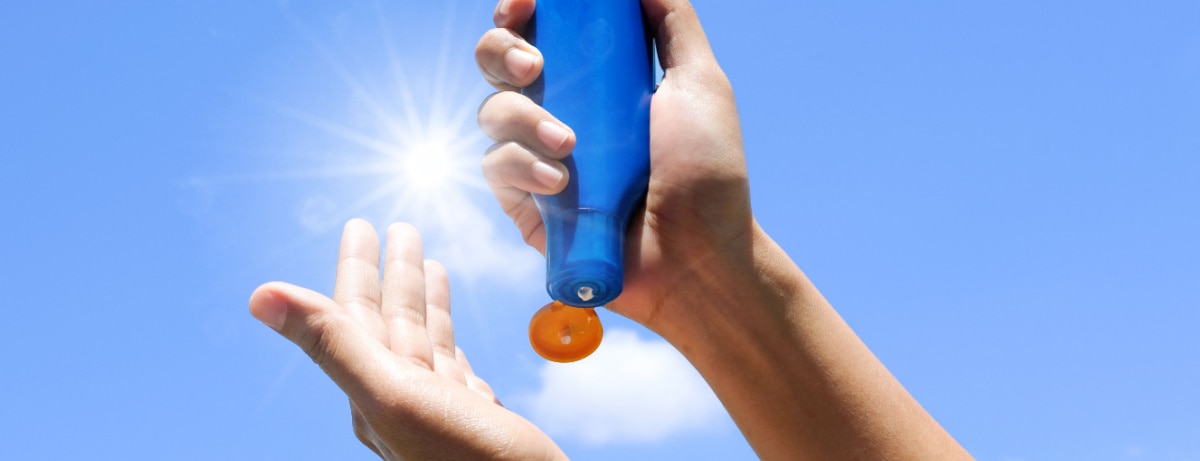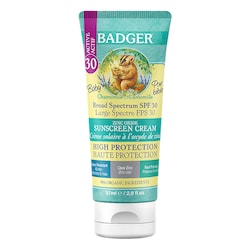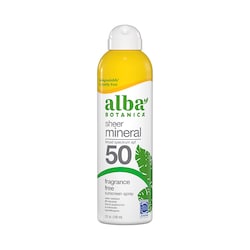15% off £20
UVA, UVB, & SPF: What's the difference?

We all know to wear sunscreen... but how does it work? And what exactly does it protect against?
It doesn’t have to be a hot day for the sun’s UV rays to reach us, and we need different protection for its different types.
We’ll find out the difference between UVA and UVB rays, plus the meaning of the SPF number you see on the bottle.¹
Spotlight on... UVA
What is it?
UVA makes up about 95% of all UV light from the sun.²
It’s also found in sunbeds, sunlamps, and tanning booths. It is not safer to use these than to go out in the sun. In fact, it may be even more dangerous, depending on a few factors like:³
-
The strength of the UV rays
-
How often you use a sunbed, sunlamp, or tanning booth
-
How long you spend in there
-
Your skin type and colour
-
Your age
UVA rays penetrate deep into the skin and affect its elastin, so they’re the kind most associated with signs of skin ageing like wrinkles.⁴ ⁵
What are the negative effects of UVA?
What are the negative effects of UVA?
You might have heard that some UV rays are “more dangerous” than others, but both types can cause sunburn, suntan, and skin damage. No type of UV light is safe for our skin.⁵
In fact, UVA can pass through clouds and glass, so you’ll need to take care even on greyer days and inside (such as if you spend a lot of time in a car or near a window) if the UV index is high.²


How can I protect against UVA?
Not all sunscreens protect against UVA light, so it’s very important you find one that does.
The SPF rating on a sun lotion or suncream does not show its protection against UVA rays. Instead, look for a “star” rating on the bottle.
The more stars the better; the highest number is 5. You should choose a product with at least 4 stars to help protect you against UVA damage.⁶
You might also see a circle with “UVA” in the middle; this means that the sunscreen meets the EU standard for UVA protection.
As well as wearing sunscreen, you should follow other sun safety measures, like:
-
Staying hydrated: the NHS usually recommends 6-8 glasses (1.5-2 litres) of fluid per day, but advises at least 2 litres during hot weather.⁷ ⁸
-
Avoiding the sun during the hottest hours of the day (11am-3pm)⁹
-
Wearing light-coloured, loose clothing ⁹
What is it?
UVB makes up the remaining UV light that reaches us. The rays don’t penetrate as deeply as UVA, but they can still harm our skin.
What are the negative effects of UVB?
What are the negative effects of UVB?
Instead, UVB is the most responsible for sunburn. However, any type of UV light can give you sunburn.
This also means that it’s the type most commonly associated with DNA damage that can lead to cancer.⁴ But, again, both UVA and UVB light can cause this.


How can I protect against UVB?
All sunscreens with an SPF rating will help protect you against UVB rays. That said, no amount of sunscreen can completely block out UV rays of any kind. You’ll also need to follow sun safety guidelines to stay as safe as possible.
The NHS recommends you use an SPF of at least 30 to help protect against UVB.⁶
UV rays can reach us all year round – not just when it’s hot and sunny – so it’s best to wear an SPF no matter the weather.
Spotlight on... SPF
SPF stands for “sun protection factor”.
The SPF rating on a sunscreen describes its level of UVB protection. The higher the number, the more protection it provides.
The number on the bottle shows you how much longer you’re protected with the sunscreen than without. For example, wearing an SPF 30 would take you 30 times longer to burn than if you didn’t wear any.¹⁰
That also means that SPF 30 (when applied correctly) should protect you for twice as long as SPF 15.
Of course, this is with perfect use – we all sweat, miss bits, or forget to top up our sunscreen. And no sunscreen can block out UV rays entirely. SPF 30 blocks about 97% of UVB, while SPF 50 blocks about 98%.²
But the higher the number, the better: at least 30 is ideal.
How does sunscreen work?
How does sunscreen work?
There are two types of sunscreen and they work in different ways:¹¹
-
Mineral sunscreen works like a shield. It blocks the rays and helps deflect them away from your skin.
-
Chemical sunscreen works like a sponge and absorbs the rays.


The final say
Know your UVA from your UVB?
Remember, the sun emits UV rays all year round, so be sure to pick a sunscreen that protects you whatever the weather.
It’ll become a habit before you know it, so say hello to safer skin!
The advice in this article is for information only and should not replace medical care. Please check with your GP or healthcare professional before trying any supplements, treatments or remedies. Food supplements must not be used as a substitute for a varied and balanced diet and a healthy lifestyle.
2. https://www.britishskinfoundation.org.uk/blog/sunscreen-explained
3. https://www.nhs.uk/common-health-questions/lifestyle/are-sunbeds-safe/
4. https://www.fitfortravel.nhs.uk/advice/general-travel-health-advice/sun-safety
5. https://www.royalberkshire.nhs.uk/media/pazpj3cj/sun-and-your-skin_may22.pdf
6. https://www.nhs.uk/live-well/seasonal-health/sunscreen-and-sun-safety/
7. https://www.nhs.uk/live-well/eat-well/food-guidelines-and-food-labels/the-eatwell-guide/
8. https://www.leedsccg.nhs.uk/news/stay-safe-and-well-in-the-heatwave/
9. https://www.nhs.uk/conditions/heat-exhaustion-heatstroke/
10. https://www.skincancer.org/blog/ask-the-expert-does-a-high-spf-protect-my-skin-better/
11. https://www.skincancer.org/skin-cancer-prevention/sun-protection/sunscreen/






















